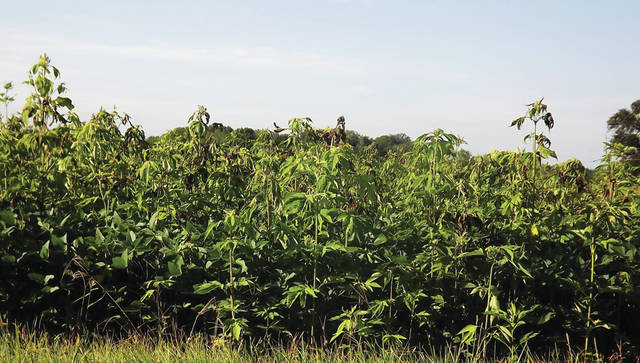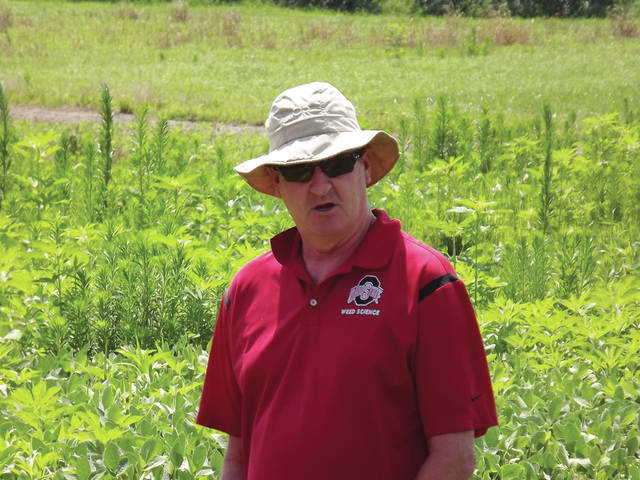

Last month I shared some thoughts on fire blight bacterial disease in apples and pear trees, raspberries and crabapples among others. This appears to be a bad year for the disease and based on comments on the article treatment has not been very helpful on apples and pears.
Pruning out the diseased part of the plant can be hard and tools used in the process are to be dipped in a 10 percent bleach solution between cuttings to help minimize spreading the disease. There is less chance to spread the disease when pruning in the winter vs. the summer. Some sprays can help slow down the bacterial disease but they are very weather dependent and not very easy to apply for homeowners. Best results are obtained with early spring sprays as the plants develop.
Another option you have is to plant cultivars of pear or apple trees which are resistant to the disease. Obviously this is a long term solution but may be the most effective. For more information on this disease log on to this website:
Answering questions
“My lawn is turning brown in places; what is the cause?”
Several possibilities come to mind. Our lawns are starting to show disease problems like brown patch and rust. Note the red color on your shoes as you walk through the lawn indicating the rust which usually can be minimized with fertilization. Brown patch is weather related due to the high amount of rain and warm temperatures. Turfgrass fungicides can be a possibility but professional application by a lawn care company is your best alternative.
In one case I found grub worms near the surface of the lawn soil feeding on grass roots. The area was in full sun and in an area with sandy soils. Upon pulling the sod up I found 3-5 grubworms. Recommendation included application of a soil grub control product making sure it was watered in with 3/8 inch of water or applied ahead of a good rain. Another cause could be Chinch Bugs but their damage would likely have shown up earlier.
A field of soybeans was turning brown in some areas around the border of the field. Closer inspection found spider mites in the area of the field with poorer soils and less water holding capacity. The brown color could also be caused by Japanese Beetles and or stink bugs. Spot treatment could be warranted but usually not a big problem. One just has to inspect the plants to tell for sure.
“My roses have leaves turning black and dropping off.”
This common disease “black spot” takes its toll on roses in humid growing conditions. Control can result from foliar sprays or soil applied products containing a fungicide. Keep in mind these products will only protect new leaves and always follow label instructions. Best advice is to plant rose cultivars resistant to black spot.
Marestail and giant ragweed
Control of these two weeds is lacking on many farm fields. I see the giant ragweed topping out over corn fields and starting to grow into small trees in soybean fields. At the July 19 Western Agronomy Ohio Field Day held at South Charleston Mark Loux OSU Ext. Weed Specialist again hit on the need to focus on these two major weed problems.
Many times a fall and spring control plan is needed for marestail. For more info on getting information on how to control these weeds log on to http://u.osu.edu/osuweeds. Look for the factsheets on marestail and giant ragweed. You can also pick up a 2017 copy of the Weed Control Guide from any Extension Office or through the Extension Estore at http://estore.osu-extension.org/.
A pdf copy of the Weed Control Guide is available free on above weed website. Where possible work with your agronomist to put together a control program.
Upcoming events
– 6 p.m. Aug. 15 – Greene Soil and Water Conservation District Annual meeting at Caesar Creek Vineyards. Cost is $10 per person. For reservations call 937-372-4478 x3.
– 9 a.m. to 3:30 p.m. Aug. 21 – Cover Crops Field Day at Beam Springs Farm 2910 Henville Road, Xenia. For info call 937-372-4478 x3.
– 8 a.m. to 5 p.m. Sept. 19, 8 a.m. to 4 p.m. Sept. 21 – Farm Science Review. To reserve a golf cart log on to website: http://fsr.osu.edu for details. Wear a comfortable pair of walking shoes. Tickets for the Farm Science Review are $7 online, at OSU Extension county offices and at participating agribusinesses, and are $10 at the gate. Children 5 and under are free.
– 4:30-7 p.m. Sept. 28 – “Test Your Well” at Greene County Fairgrounds Dining Hall. There are free tests for nitrates and iron and free lead, manganese and arsenic testing for first 70 households. For details call 937-372-4478 x3.
.neFileBlock {
margin-bottom: 20px;
}
.neFileBlock p {
margin: 0px 0px 0px 0px;
}
.neFileBlock .neFile {
border-bottom: 1px dotted #aaa;
padding-bottom: 5px;
padding-top: 10px;
}
.neFileBlock .neCaption {
font-size: 85%;
}




